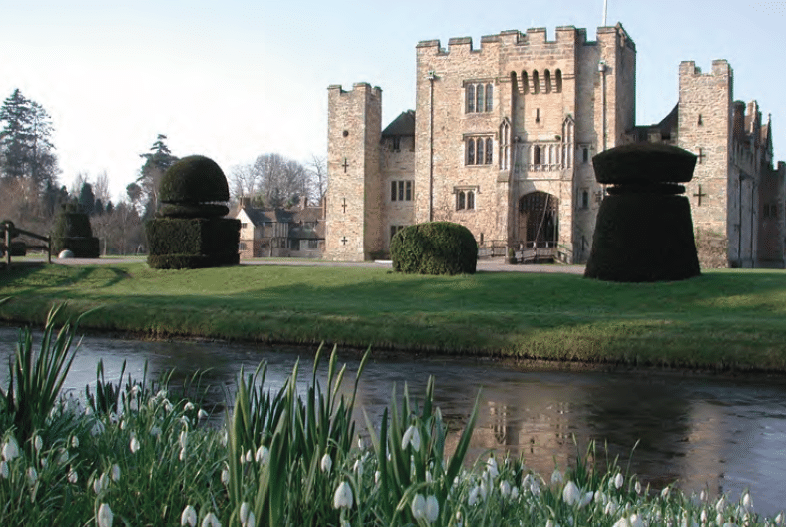It’s currently snowdrop season, so Vikki Rimmer takes a trip to Hever Castle & Gardens to check out the amazing displays that you can see courtesy of a self-guided walk…
Hever Castle is currently a hive of activity and excitement for the ‘Galanthophiles’ – a particular breed of botanists and gardeners who have a major passion for snowdrops (Galanthus).
Self-guided snowdrop walks at Hever Castle & Gardens began on February 7 and are currently running from 10.30 to 3pm daily (last exit 4.30pm). A Snowdrop Walk is included in the garden ticket entry price.
With over 140,000 snowdrop bulbs planted in the grounds, Hever Castle & Garden’s ‘Snowdrop Walk’ is not to be missed this February.
Rather fittingly for Hever Castle & Gardens, the first snowdrops cultivated in Britain were documented in 1598 during the reign of Elizabeth I – who, it is traditionally thought, visited Hever Castle & Gardens, the childhood home of her mother Anne Boleyn.
There’s a religiosity to these delicate white flowers that gently trumpet the closing month of winter and the hope for spring to come.
Snowdrop Walks (a self-guided tour) takes the visitor to Hever Castle & Gardens along a wonderful exploratory tour of the Outer Moat, the Winter Gardens and through Sunday Walk and Church Gill.
Neil Miller, Head Gardener at Hever Castle & Gardens, has a passion for the Galanthus flower and has planted on average 10,000 extra snowdrops every year since 2017, doubling the number from 70,000 to 140,000 today.
Neil explains: “Thousands of Galanthus nivalis can be found blooming away on the Outer Moat, patrolled by a pair of our white swans, while up on Sunday Walk, snowdrops accompany the walker all the way up to Church Gill where unusual varieties have been planted in this newly developing garden.
“The Winter Garden at Hever Castle is also home to some unusual snowdrops like the giant ‘Colossus’, ‘Wendy’s Gold’ (a yellow-tinged beauty), ‘Grumpy’ (with markings that mimic a sad face) and Galanthus ‘Green Brush’.”
There’s much to learn about these tiny green and white flowers adds Neill. “They are known for their medicinal properties and ability to cure headaches (those with a throbbing head would pick and gently rub the bulb at their temples!
“Snowdrops were traditionally grown in churchyards to coincide with Candlemas Day which falls on February 2.”
Visitors to Hever Castle & Gardens during February will find further snowdrop facts placed around the ground.
Visitors will be able to learn how:
• The snowdrop plant was first logged by the godfather of the snowdrop world Carl Linnaeus as ‘Galanthus nivalis’– the word comes from the Greek ‘Gala’, meaning milk and ‘Anthos’ meaning flower.
• Snowdrops weren’t named after drops of snow but instead after ‘eardrops’ – the name for earrings worn by women from the 15th to 17th centuries
• Snowdrops contain their own antifreeze proteins and were once harvested during the First World War to make antifreeze for tanks
• It’s unlucky to bring a single snowdrop into your home – it’s akin to inviting death inside.
• William Wordsworth wasn’t just enamoured with daffodils, in 1819 he was inspired by the Galanthus plant to write the poem ‘To a snowdrop’
Self-guided snowdrop walks at Hever Castle & Gardens run from 10.30 to 3pm daily (last exit 4.30pm). A Snowdrop Walk is included in the garden ticket entry price. For further details visit: hevercastle.co.uk








